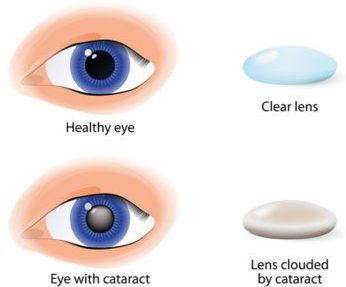CATARACTS
What are Cataracts?
What Causes Cataracts?
What Are the Symptoms of Cataracts?
- Blurry or cloudy vision,
- Faded colours,
- Increased or extreme glare from lights,
- Poor vision at night,
- Difficulty with either near vision or distance vision,
- Multiple images,
- Frequent change in eye spectacle prescription.
Who is at Risk of Cataracts?
- A part of the natural ageing process,
- An inherited syndrome
- A complication of other diseases such as glaucoma and diabetes.
- infections during pregnancy that can affect an infant’s eyes,
- prolonged use of corticosteroid inhalers or eye drops,
- excessive exposure to UV rays (sunlight),
- exposure to X-rays and other radiation during radiotherapy.
What are the Stages of Cataracts?
Types of Cataracts
- Nuclear Cataract
- Cloudiness is present in the centre of the lens.
- Cortical Cataract
- Cloudiness is seen as white spokes in the outer periphery of the lens.
- Posterior Sub-capsular Cataract
- This occurs at the back of the lens capsule, which is like a shell of the lens. It may develop quicker than the other types of Cataracts and it is more commonly seen in patients with diabetes or on long-term steroid treatment.
Diagnosis of Cataracts
- Visual Acuity Test
- This test involves reading an eye chart from a certain distance with one eye at a time.
- Eye Examination
- A comprehensive eye examination will then be performed to assess the severity of the cataract.
- Slit Lamp Examination
- A slit lamp examination uses a microscope to examine the structures in front of the eye such as the lens and cornea, which are illuminated by a bright line of light.
- Retinal Examination
- A retinal examination may be performed to look for problems with the retina. This involves the light-sensitive layer at the back of your eyes.











